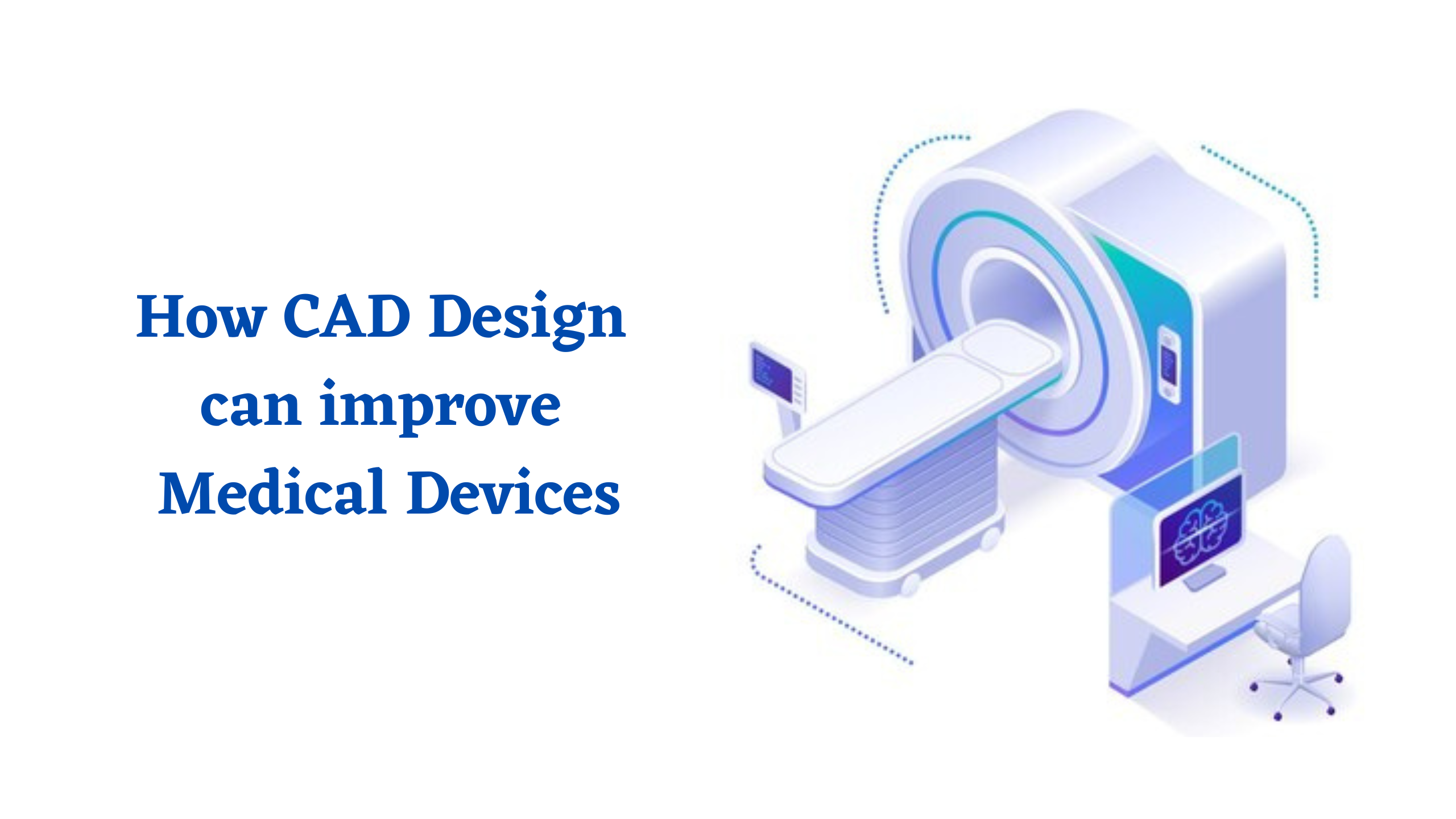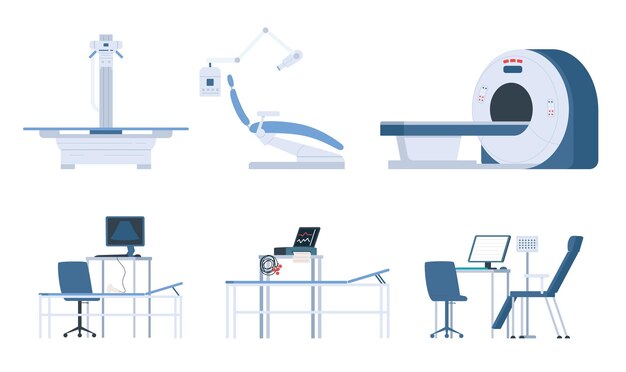
The world of medical device design has evolved tremendously over the years, with CAD (Computer-Aided Design) playing a crucial role in this transformation. CAD for medical devices design allows engineers and designers to create precise, innovative, and life-saving devices that push the boundaries of what’s possible in healthcare. In this blog, we’ll explore the benefits of medical device CAD design and how it’s enhancing medical devices with CAD technology.
Understanding the Role of CAD in Medical Device Design
CAD technology has become indispensable in the design and manufacturing of medical devices. With CAD, engineers can create detailed 3D models of medical devices, simulating their performance and behaviour before actual production begins. This not only saves time and resources but also ensures that the final product meets the highest standards of quality and safety.
One of the most significant advantages of CAD modeling for medical devices is its ability to visualize and modify designs with ease. Designers can make real-time changes to a model, adjust dimensions, test functionality, and ensure that all components fit together perfectly. This flexibility is vital in an industry where precision is paramount, and there’s no room for error.
Benefits of Medical Device CAD Design
1. Precision and Accuracy
CAD-driven medical device design ensures that every aspect of a device is meticulously planned and executed. The precision offered by CAD tools is unmatched, allowing for the creation of highly detailed and accurate designs. This accuracy is essential in medical devices, where even a minor flaw can lead to significant consequences.
For instance, when designing a prosthetic limb, CAD software can be used to create a custom-fit device that perfectly matches the patient’s anatomy. This level of precision not only improves the device’s functionality but also enhances the patient’s comfort and quality of life.
Your Partner in Medical CAD Design Excellence
Collaborate with experts who deliver high-quality CAD designs tailored to the unique demands of medical devices and equipment.
2. Enhanced Collaboration and Communication
Medical device design often involves collaboration between multiple teams, including engineers, designers, doctors, and regulatory experts. CAD-based medical device design facilitates seamless communication and collaboration by providing a visual representation of the device. All stakeholders can view, comment on, and suggest changes to the design in real-time, ensuring that everyone is on the same page throughout the development process.
This collaborative approach reduces the risk of misunderstandings and errors, leading to a more efficient design process and a better final product.
3. Cost-Effective Prototyping
Prototyping is a critical step in medical device design, allowing designers to test and refine their ideas before mass production. CAD modeling for medical devices enables the creation of virtual prototypes, which can be tested and analyzed without the need for physical models. This not only reduces the cost of prototyping but also speeds up the development process.
Additionally, CAD software can simulate the manufacturing process, identifying potential issues before they occur. This predictive capability helps to avoid costly mistakes and ensures that the final product is ready for production with minimal revisions.
4. Faster Time-to-Market
In the competitive field of medical devices, getting a product to market quickly can be a significant advantage. Improving medical devices design with CAD streamlines the design process, allowing for faster development and testing. CAD software automates many of the time-consuming tasks associated with design, such as creating detailed drawings, generating bill of materials (BOMs), and performing simulations.
By reducing the time required for design and testing, CAD helps medical device manufacturers bring their products to market more quickly, giving them a competitive edge.
5. Regulatory Compliance
Medical devices are subject to stringent regulations to ensure their safety and effectiveness. CAD-driven medical device design helps manufacturers comply with these regulations by providing detailed documentation and traceability. CAD software can generate reports and documentation that are necessary for regulatory submissions, making it easier to demonstrate compliance with industry standards.
Moreover, the accuracy and precision of CAD designs reduce the likelihood of design flaws that could lead to regulatory issues, ensuring that the final product meets all necessary requirements.
6. Customization and Personalization
One of the most exciting applications of CAD for medical devices design is the ability to create customized and personalized devices. Every patient is unique, and in some cases, a one-size-fits-all approach may not be sufficient. CAD technology allows for the creation of custom devices tailored to an individual’s specific needs.
For example, in the case of dental implants, CAD can be used to design an implant that matches the patient’s jaw structure perfectly, leading to better outcomes and a more natural look and feel. This level of customization is particularly valuable in fields like orthopedics, where personalized implants can significantly improve patient outcomes.

How CAD Designs Impact Medical Devices?
The impact of CAD designs on medical devices cannot be overstated. From improving the precision of surgical instruments to enabling the creation of advanced prosthetics, CAD technology is at the forefront of innovation in the medical field.
1. Improving Surgical Instruments
Surgical instruments must be designed with the utmost precision to ensure they perform reliably during procedures. CAD-based medical device design allows for the creation of intricate and highly precise surgical instruments that meet the rigorous demands of modern surgery. By simulating how these instruments will function in real-world conditions, designers can make necessary adjustments to enhance their performance.
This results in instruments that are more effective, easier to use, and safer for patients, ultimately leading to better surgical outcomes.
2. Advancing Prosthetics and Orthotics
Prosthetics and orthotics are among the most transformative medical devices, restoring mobility and independence to individuals with limb loss or musculoskeletal conditions. CAD design plays a crucial role in the development of these devices, allowing for the creation of prosthetics and orthotics that are both functional and comfortable.
CAD modeling for medical devices enables the design of prosthetic limbs that closely replicate the natural movement of the human body. This not only improves the wearer’s mobility but also enhances their overall quality of life. Additionally, CAD technology allows for the customization of these devices, ensuring a perfect fit for each patient.
3. Revolutionizing Implantable Devices
Implantable medical devices, such as pacemakers, cochlear implants, and stents, require precise design and engineering to function correctly within the human body. CAD for medical devices design ensures that these implants are designed to exact specifications, minimizing the risk of complications.
Moreover, CAD-driven medical device design allows for the simulation of how these devices will interact with the human body. This enables designers to optimize performance before surgeons implant the devices in patients.
4. Enhancing Diagnostic Devices
Diagnostic devices, such as imaging machines and laboratory equipment, rely on precise design and engineering to provide accurate and reliable results. CAD-based medical device design improves the accuracy and functionality of these devices, leading to better diagnostics and, ultimately, better patient care.
Engineers can use CAD technology to design imaging machines with higher resolution and better image clarity. This leads to more accurate diagnoses. This, in turn, leads to more effective treatment plans and improved patient outcomes.
Advanced CAD Design Services for Medical Devices Design
At Shalin Designs, we specialize in providing advanced CAD design services for medical devices. Our team of experienced designers and engineers uses the latest CAD software. We create innovative and reliable medical devices that meet the highest standards. Every product is designed with a focus on quality and safety.
1. Comprehensive Design Solutions
We offer comprehensive CAD-based medical device design solutions, from initial concept development to final production. Our services include 3D modeling, prototyping, simulation, and documentation, ensuring that every aspect of the design process is covered.
Whether you’re developing a new medical device or improving an existing one, our team has the expertise and experience to bring your ideas to life.
2. Customization and Personalization
We understand that every medical device project is unique, and we work closely with our clients to create customized solutions that meet their specific needs. Our CAD-driven medical device design services create personalized devices that meet each patient’s requirements, ensuring the best possible outcomes.
3. Regulatory Compliance
Regulatory compliance is a critical aspect of medical device design, and our team follows the latest industry standards and regulations. We ensure that all our designs are fully compliant with regulatory requirements, providing detailed documentation and traceability throughout the design process.
4. Innovation and Excellence
At Shalin Designs, we are committed to innovation and excellence in everything we do. Our advanced CAD design services for medical devices are at the cutting edge of technology. This enables us to create devices that are not only functional and reliable but also groundbreaking.
Conclusion
CAD technology has revolutionized the design and development of medical devices, offering unparalleled precision, customization, and efficiency. From improving surgical instruments to advancing prosthetic and enhancing diagnostic devices, CAD for medical devices design plays a vital role in shaping the future of healthcare.
At Shalin Designs, we are proud to offer advanced CAD design services that help our clients bring innovative and life-saving medical devices to market. Whether you’re looking to develop a new device or improve an existing one, our team of experts is here to help.
Are you ready to take your medical device design to the next level? Contact us today to learn how our advanced CAD design services can help you create innovative and reliable medical devices that meet the highest standards of quality and safety. Let’s work together to improve the future of healthcare.